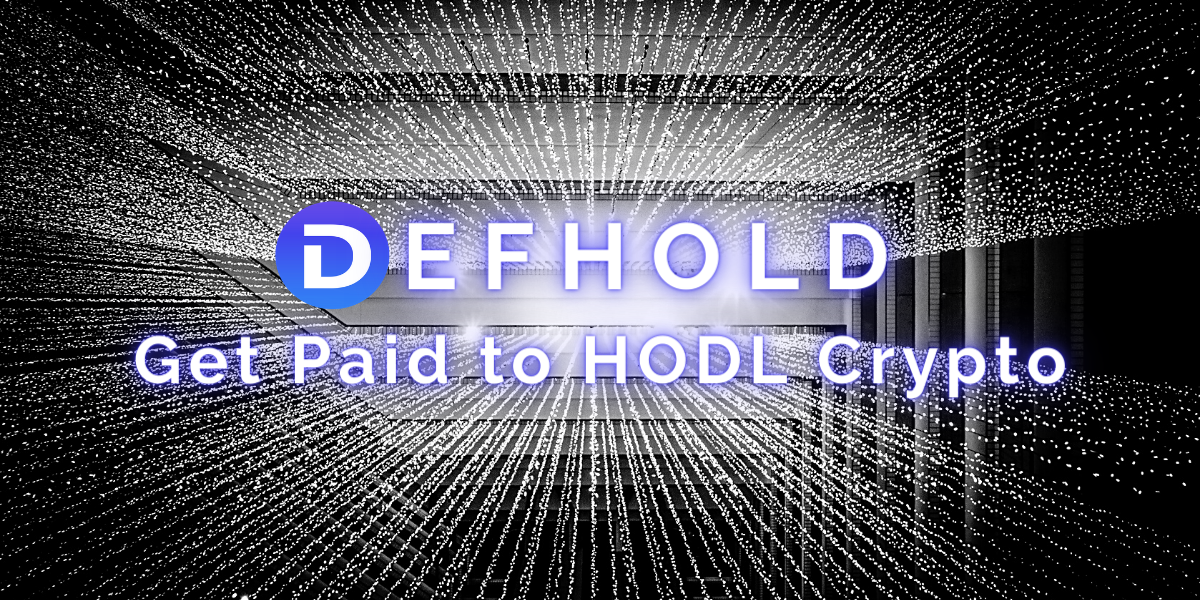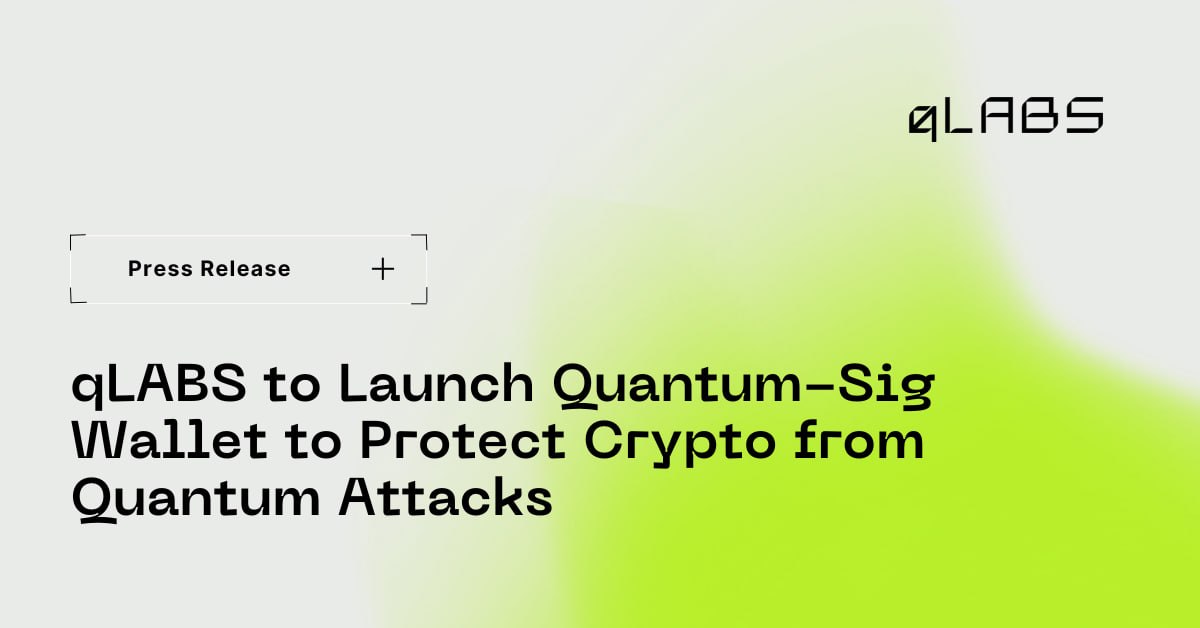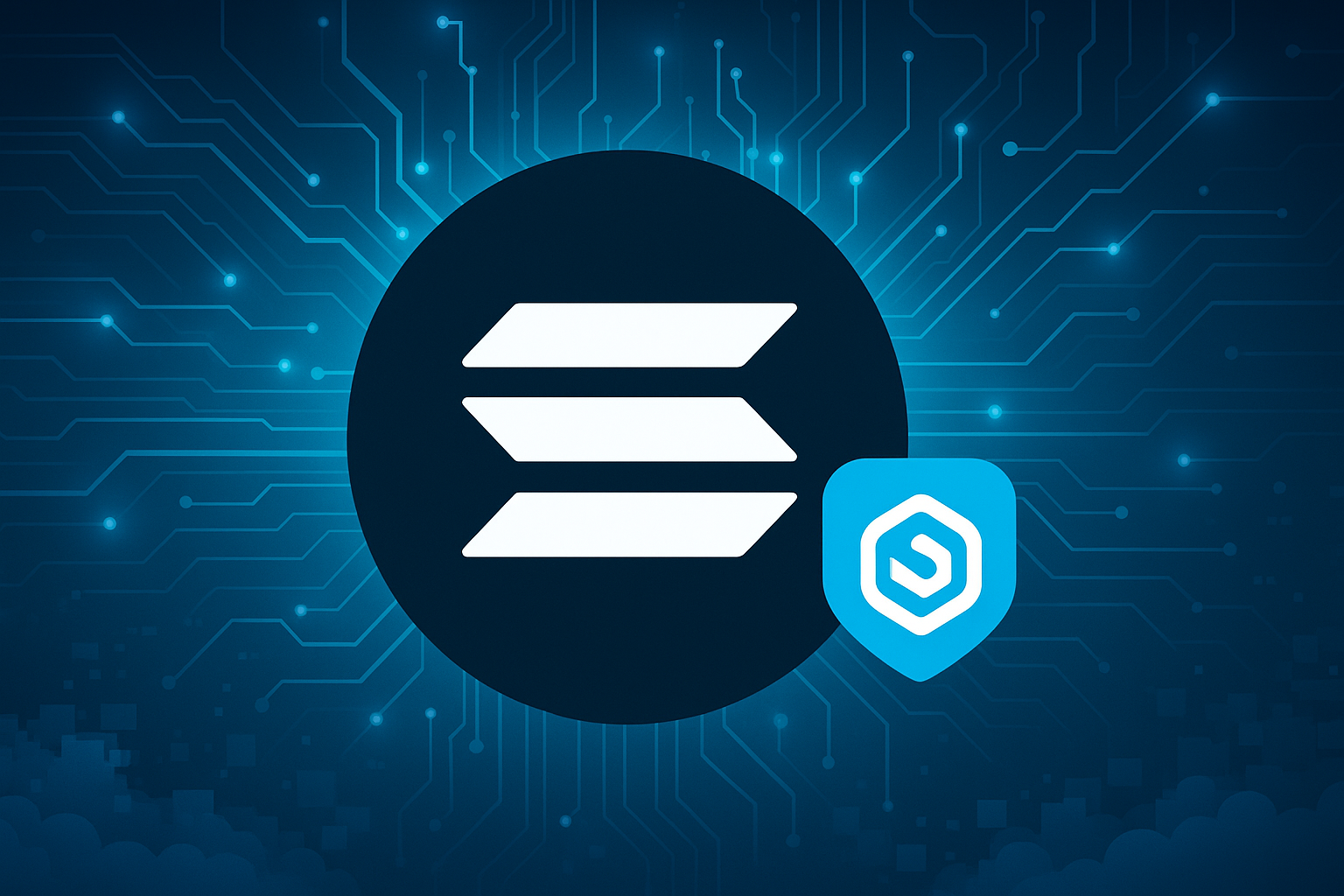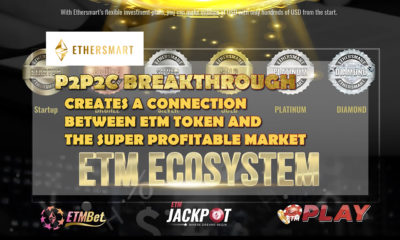Press Release
Get Paid to HODL Crypto: DEFHOLD Comprehensive Review

Have you ever thought of saving crypto? Well, this is almost impossible thanks to market volatility characterized by market dumps. While the DeFi sector is rapidly expanding, speculative investors easily liquidate their holdings, causing a rapid sell-off. This leads to a rapid decrease in the value of a DeFi project. DefHold attempts to streamline the DeFi sector by solving inflation and providing incentives to speculative traders to hold cryptocurrencies during market dumps and consequently generate yields on the underlying assets.
DefHold achieves this by implementing new autonomous yield generating solutions. Here’s a comprehensive review of the first non-inflationary staking and farming system designed to reward long-term holders.
DEFHOLD Overview
DefHold describes itself as a non-inflationary DeFi ecosystem that seeks to offer yield generating investments’ strategies to long-term crypto holders. Currently, a conventional means of securing assets during market dumps and pumps is to convert assets to stable coins. The stable coins can thereafter be staked or farmed into various DeFi protocols generating yields on the underlying asset.
But this means of securing assets during markets’ dump and pump has the undergoing of price drop leading to losses. DefHold seeks to reward long-term crypto investors with accurate portfolios and own liquidity’s management by implementing new autonomous yields generating solutions. In the future, the platform will also launch a fully decentralized governance system allowing users to make crucial decisions regarding the project’s future developments and vote on essential network upgrades such as different lock-up periods, transfer fees, vote to launch new tokens, etc.
DEFHOLD Pays You to HODL
DefHold’s innovative non-inflationary staking and farming system pays you to HODL your tokens. The DEFHOLD ecosystem encompasses multiple yields generating mechanisms that compensate investors for holding tokens during a market dump or pump. This offers investors access to multiple revenue streams, i.e., yield-generating investments, without having large capitals.
Unlike most DeFi platforms, which leverage a business model that depends on inflationary tokens, DefHold combats inflation with the capping of DEFO tokens at 12,000 DEFO. The protocol isn’t planning to issue any additional tokens to prevent inflation by ensuring scarcity.
DeFi platforms that employ a business model and issue more tokens often mint these tokens to enhance their APY (Annual Percentage Yield). However, this strategy exposes the market to multiple threats, which could lead to its failure. Also, the value of tokens in circulation always drops in value once a DeFi platform releases additional tokens to the market. Enhanced token inflation coupled with speculative investors’ impulsive actions causes a myriad of problems such as runoff sales that lower the value of a DeFi project.
About DEFO-The Non-Inflationary Yield Generator
DEFO is the DefHold ecosystem’s native token, enabling holders to stake or farm their assets into pools with different predefined lock-up periods. However, investors (farmers and stakers) can still be able to withdraw their assets before the term of the lock-up period at any time by paying an early withdrawal fee (EWF).
DefHold will employ various revenue streams to reward stakers and farmers who have accurately managed their portfolios and their own liquidity requirements. The first revenue stream will be the early withdrawal fee (EWF) charged when stakers and farmers withdraw their assets before the asset lock-up period expiry. The EWF funds are collected then split up among the remaining members.
The second yield generating mechanism is transfer fees. The platform will charge a small transfer fee on every DEFO token’s transfers. The collected fees will then be split proportionally among stakers and farmers.
These 2 revenue-generating mechanisms will continuously generate yields to stakers and farmers in a non-inflationary way. Unlike other DeFi platforms that leverage inflationary tokens to enhance their APY, DefHold will not produce additional DEFO tokens, in turn keeping their supply low. By channeling revenue to the farmers and stakers, DefHold ensures that investors hold on to the investment strategy even during a market dump.
Revenue Allocation
As mentioned above, DefHold will have two different revenue streams to be shared between the stakers and farmers, i.e. (EWF + Transfer fee). These revenues will be allocated as below:
EWF revenues allocation:
5%: to developer fund
95%: to stakers/farmers according to their share of their respective pool
Transfer fee revenues’ allocation:
5%: to developer fund
40%: to stakers (equally shared between all the staking pools)
55%: to farmers (equally shared between all the farming pools)
DEFO Staking & Farming
DEFO token powers the DefHold ecosystem. The token has several use cases in the ecosystem. The primary use case is a staking or farming token where users farm/stake their assets in pools with pre-defined lock-up periods using the token. Currently, DefHold users can stake DEFO tokens or farm DEFO/ETH& DEFO/USDT LP tokens. In the future, DefHold seeks to add additional token pools depending on the community proposal.
The non-inflationary staking & farming pools are as below.
Staking Pools
| Pools | Lock-up Period | EWF |
| 1st Pool | 10 days | 1% of staked DEFO |
| 2nd Pool | 30 days | 3.5% of staked DEFO |
| 3rd Pool | 60 days | 8.2% of staked DEFO |
| 4th Pool | 90 days | 14.3% of staked DEFO |
| 5th Pool | 180 days | 33.33% of staked DEFO |
Farming Pools
| Pools | Lock-Up Period | EWF |
| 1st Pool | 10 days | 2% of farmed LP tokens |
| 2nd Pool | 30 days | 7% of farmed LP tokens |
| 3rd Pool | 60 days | 16.3% of farmed LP tokens |
| 4th Pool | 90 days | 28.6% of farmed LP tokens |
| 5th Pool | 180 days | 66.6% of farmed LP tokens |
How Will DefHold Enhance Liquidity
Liquidity has turned out to be vital for DeFi platforms, especially after the entrance of decentralized exchanges (DEX). To enhance liquidity, DefHold implements two primary mechanisms listed below.
- EWF and transfer fee revenues are distributed mostly to farmers to enhance their revenues and incentivize them to offer liquidity to the DefHold ecosystem.
- The platform will conduct a presale using the Liquidity Dividends Protocol (LID). In the sale, 75% of the raised ETH will be allocated to Uniswap liquidity and locked by the smart contracts. This will protect investors against dumping and exit scams.
Closing Words
To conclude, DefHold is a non-inflationary DeFi ecosystem which will transform the DeFi space by providing yield generating investments’ strategies to long-term crypto holders. The platform will surely solve inflation and the problem of impulsive speculative investors who are easy to spook, causing a drop in the value of DeFi projects.
Press Release
qLABS to Launch Quantum-Sig Wallet to Protect Crypto From Quantum Attacks

qLABS, the first quantum native crypto foundation, announced the upcoming launch of the Quantum-Sig smart contract wallet. This wallet introduces enterprise-grade post-quantum cybersecurity directly into the Web3 environment through a strategic alliance, as previously announced, between qLABS and 01 Quantum (TSX-V: ONE; OTCQB: OONEF).
Next-Generation Security for Digital Assets
The Quantum-Sig wallet technology will protect any smart-contract-based token such as Ethereum, HYPE or Solana including leading stablecoins such as USDT and USDC. At the core of this innovation is the upcoming qLABS quantum resilient ecosystem token known as qONE which will become the primary utility token powering this new security protocol across Web3.
This innovation directly addresses the accelerating risk of Q-Day which is the moment when it is anticipated quantum computers will be capable of breaking the classical cryptography that secures today’s digital assets. As a result, funds held inside traditional wallets that rely on classical signatures can be compromised. The Quantum-Sig wallet is designed to provide a future-proof safeguard against this threat.
“Quantum-Sig is a real breakthrough. It adds quantum level protection without new wallets, without new chains and without user friction,” said Antanas Guoga (Tony G), President of qLABS. “We are delivering the security Web3 needs without changing the way people already hold and trade crypto.”
Andrew Cheung, CEO of 01 Quantum, added, “We are excited to see our patent-pending QDW technology applied in a production environment to mitigate the Q-Day risk. By embedding post-quantum cryptographic primitives directly into the Quantum-Sig wallet introduces a quantum circuit-breaker architecture that neutralizes classical key compromise. This implementation demonstrates how our technology can deliver quantum-resilient transaction signing at scale, ensuring that digital assets remain secure today and in the post-quantum world of computing.”
Market Context
The global digital asset market exceeds three trillion USD according to CoinMarketCap. Regulatory bodies in several regions have already warned that quantum resilience will soon be a requirement for long term financial security. Despite this maturity, the industry remains exposed due to reliance on classical cryptographic algorithms such as ECDSA. Quantum-Sig wallet technology addresses this gap by providing broad-spectrum protection without sacrificing interoperability or performance for smart-contract based-tokens such as Ethereum, HYPE or Solana including leading stablecoins such as USDT or USDC.
How it Works
The Quantum-Sig wallet applies security principles that are similar to the multi-signature wallets commonly used throughout Web3. In a standard multi-signature setup, two or more signatures are needed to release assets from a contract. In the case of the Quantum Sig wallet, the smart contract requires an additional signature that must be signed by a quantum resilient private key. The zero-knowledge proof engine which is at the core of this innovation, makes it possible to verify large quantum-safe signature data on existing chains. As a result, a malicious actor cannot withdraw funds even if they compromise the classical key. The Quantum-Sig wallet ensures protection at the smart contract level while maintaining speed and interoperability for users and developers.
Technical Highlights
- Patent-pending method (US #19/396,202): Implementation of PQC circuit breaker.
- Performance optimization: Compatible with existing Layer 1 chains.
- Scalable toolkit: Includes support for custodian wallets and existing post-quantum stablecoins.
The qONE token, which is a quantum-resistant token on Hyperliquid, serves as the ecosystem asset that grants access to quantum resilient wallet functions, advanced security features, protocol governance and the broader quantum safe infrastructure developed by qLABS. The qONE initiative is designed to synchronize community engagement with the adoption of the Quantum-Sig technology, thereby incentivizing the sustained expansion of the ecosystem.
Financing and Growth
qLABS confirmed that it completed its pre-seed round financing which was over-subscribed and raised USD $390,000 in early-stage capital from strategic investors, establishing an implied market valuation of USD $6 million for the Tier # 1 pre-seed round. This marks the first step in a multi-stage financing plan by qLABS that is expected to include two additional rounds and the broader distribution of the qLABS token to the community as development and adoption continue to grow.
About qLABS
qLABS is the first quantum-native crypto foundation, developing blockchain solutions that are resistant to quantum computing threats. With a focus on post-quantum security, qLABS builds infrastructure that will protect Web3 from Q-Day and beyond.
For more information visit qLABS’s web site at https://qlabs.tech/ / https://x.com/qlabsofficial and follow them on their blog at https://www.linkedin.com/company/qlabsofficial/
About 01 Quantum Inc.
01 Quantum Inc., formerly 01 Communique Laboratory Inc., (TSX-V: ONE; OTCQB: OONEF), is known for its innovative work in post-quantum cybersecurity and remote access solutions. The Company’s cyber security business unit focuses on post-quantum cybersecurity with the development of its IronCAP™ product line. IronCAP™’s technologies are patent-protected in the U.S.A. by its patents #11,271,715 and #11,669,833. The Company’s remote access business unit provides its customers with a suite of secure remote access services and products under its I’m InTouch and I’m OnCall product offerings. The remote access offerings are protected in the U.S.A. by its patents #6,928,479 / #6,938,076 / #8,234,701; in Canada by its patents #2,309,398 / #2,524,039 and in Japan by its patent #4,875,094. For more information, visit the Company’s web site https://01quantuminc.com | https://01com.com and follow us on our blog at https://blog.01com.com/wp
Press Release
Loadit Unveils Interactive MVP and Files Sweeping Unified Financial Rail Patent

Patent-Pending Architecture Covers AI Routing, Offline Transactions, Temporal Settlement, and Energy as Native Money
Loadit today launched its public interactive MVP at https://mvp.loadit.net and simultaneously filed a landmark non-provisional patent application that consolidates ten previously separate financial rails into one unified, interlocking system.
The newly filed patent (application titled “Loadit Unified Financial Rail”) is now officially patent-pending with the USPTO and covers the entire Loadit technology stack, including:
• AI-orchestrated multi-rail routing (AERO)
• Identity-verified offline transactions (IVOR)
• Temporal programmable settlement (TSM)
• Energy-native monetary units backed by verifiable kWh/MJ (ENM)
• Quantum-optimized path selection and key management
• Universal value conversion across cash, card, fiat, crypto, stablecoins, and tokenized assets
• Geo-temporal compliance engine
• Self-healing fault-tolerant architecture
• Multi-reality (AR/VR/BCI) transaction interfaces
• Point-of-sale cash-to-crypto ingestion with zero new hardware
The live MVP at https://mvp.loadit.net lets anyone explore every patented layer in real time: watch the AI engine score and select rails, trigger an offline biometric transaction, lock in retroactive or future settlement prices, and convert dollars into spendable tokenized kilowatt-hours backed by real metered energy.
A companion site at https://loadit.net showcases the simplest merchant use case: any existing checkout counter becomes a crypto on-ramp in seconds using just a printed QR code.
“Most projects solve one piece of the puzzle. We just patented the entire operating system in one filing,” said Colt Trudell, founder and sole inventor. “The MVP is public today so the world can see exactly how Loadit turns decades of fragmented payment and energy infrastructure into a single coherent rail.”
Loadit is now actively seeking investors as it prepares to scale its unified financial rail into global retail, fintech, and energy markets.
About Loadit
Loadit is building the unified settlement layer for cash, cards, crypto, and energy. One architecture. Zero hardware lock-in. Patent-pending worldwide.
https://mvp.loadit.net – full interactive demo
https://loadit.net – merchant on-ramp
colt@loadit.net
Blockchain
LYNK Emerges as Community-First Token on Solana Following Contract Swap

LYNK reintroduces itself after a 1:1 contract migration, touting locked supply and community governance as it seeks traction within the Solana ecosystem.
LYNK (ticker: LYNK), a community-focused token on the Solana chain, returned to the market this week after completing a 1:1 contract swap. CoinMarketCap lists the token at roughly $0.0034 with a reported market cap near $797,500 and 24-hour volume of about $17,500, reflecting significant short-term volatility typical of newly relaunched community tokens.
Built and marketed as a community-driven project, LYNK positions itself as “more than just a meme coin,” emphasizing transparency, holder participation and education. The project page notes that roughly 76.64% of the supply is locked for 12 months, a detail the team highlights as a stability measure designed to align incentives and limit immediate sell pressure. CoinMarketCap shows a total supply of about 999.89 million LYNK, with a self-reported circulating supply of 233.53 million.
Technical and market notes on the CoinMarketCap listing indicate the token sits in the Solana ecosystem and is tagged with community-oriented categories. The page also flags the recent contract migration — an important operational step that can affect exchange listings, wallet compatibility and on-chain tracking. Explorers linked from the listing point to Solana network records for both the old and new contracts.
Community signals on the listing point to a small but active holder base; CoinMarketCap displays about 290 holders at the time of publication. That modest holder count, coupled with a high short-term price swing, signals that LYNK remains an early-stage token where liquidity and distribution are still evolving.
For readers tracking new Solana projects, the LYNK listing is worth noting for its combination of a large proportion of locked tokens, a recent 1:1 contract migration and an explicit community-first narrative. These elements will likely shape how the token is stewarded and traded in the coming months.
-

 Crypto4 years ago
Crypto4 years agoCardalonia Aiming To Become The Biggest Metaverse Project On Cardano
-

 Press Release5 years ago
Press Release5 years agoP2P2C BREAKTHROUGH CREATES A CONNECTION BETWEEN ETM TOKEN AND THE SUPER PROFITABLE MARKET
-

 Blockchain5 years ago
Blockchain5 years agoWOM Protocol partners with CoinPayments, the world’s largest cryptocurrency payments processor
-

 Press Release5 years ago
Press Release5 years agoETHERSMART DEVELOPER’S VISION MADE FINTECH COMPANY BECOME DUBAI’S TOP DIGITAL BANK
-

 Press Release5 years ago
Press Release5 years agoProject Quantum – Decentralised AAA Gaming
-

 Blockchain5 years ago
Blockchain5 years agoWOM Protocol Recommended by Premier Crypto Analyst as only full featured project for August
-

 Press Release5 years ago
Press Release5 years agoETHERSMART DEVELOPER’S VISION MADE FINTECH COMPANY BECOME DUBAI’S TOP DIGITAL BANK
-

 Blockchain6 years ago
Blockchain6 years ago1.5 Times More Bitcoin is purchased by Grayscale Than Daily Mined Coins






